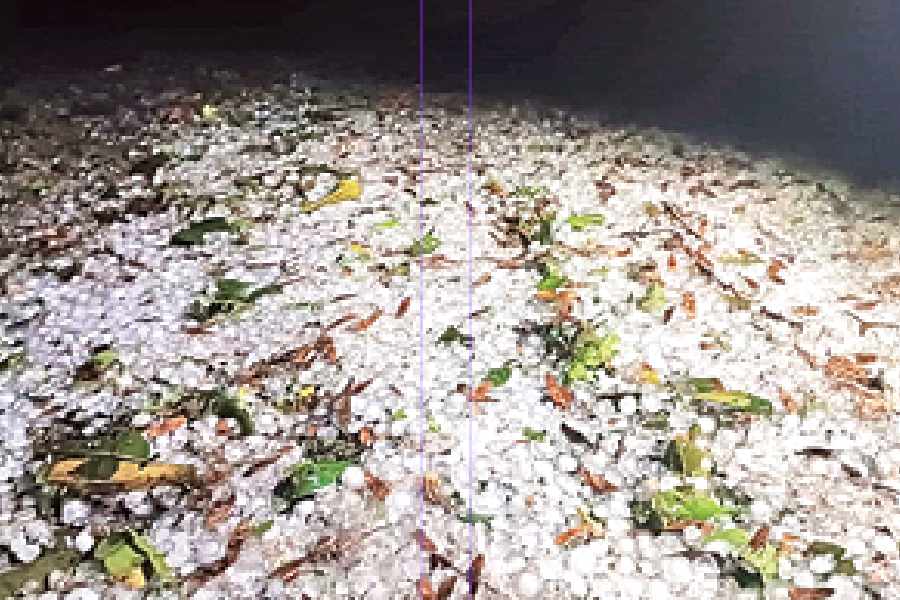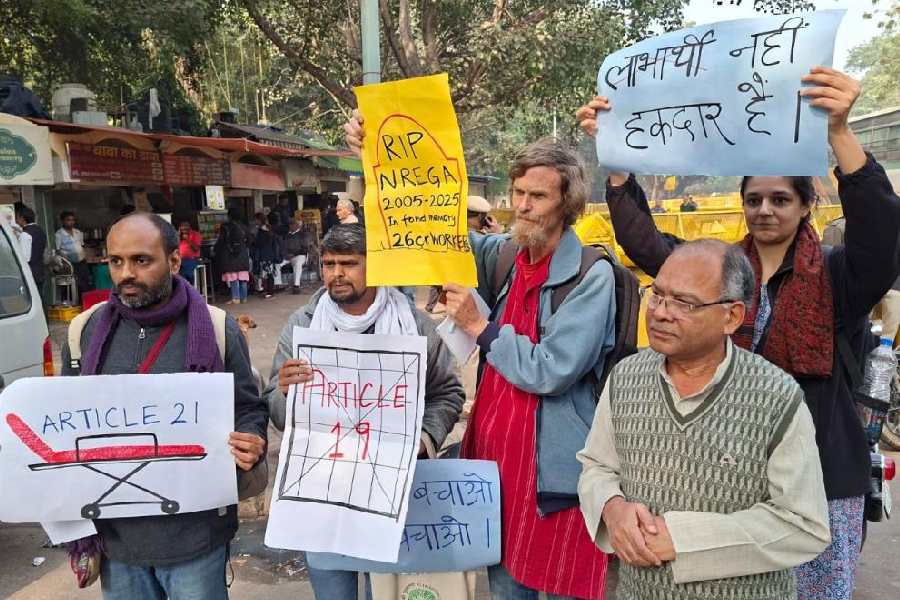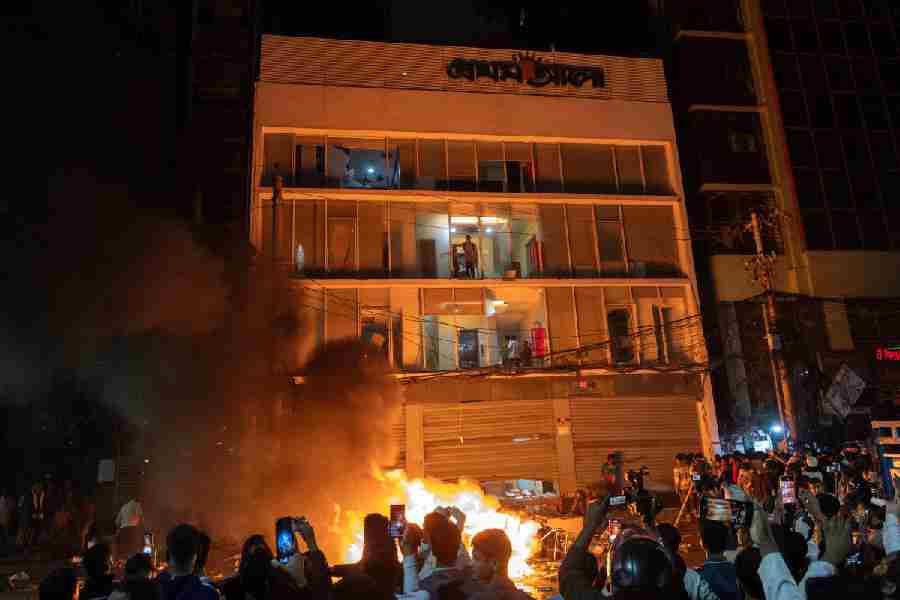A hailstorm so “severe” that residents could not recall a parallel in decades struck Kharagpur, a town known for extreme heat, on Tuesday evening.
The storm left the town covered in a thick white sheet.
Social media was abuzz with pictures and videos. “See friends, this is not Kullu, this is not Manali, neither is this Rohtang Pass. This is our own Kharagpur,” said one post.
It was accompanied by a clip of a road under a white blanket.
“Feels like Kashmir, but it’s just a hailstorm at IITKGP,” said the caption of an Instagram reel.
What happened
Arunima Mukherjee, 35, a resident of Sarada Pally, a 10-minute drive from Kharagpur station, said the hailstones were preceded by strong gusts of wind.
“A storm began around 7.50pm. It was followed by a brief spell of rain, that was accompanied by hailstones. But soon, it turned into a severe hailstorm that lasted for more than 20 minutes,” said Mukherjee, who works with a private firm at the Vidyasagar Industrial Park there.
“The storm left a thick white sheet over the ground. It stayed white for almost an hour. Even the elders in my house said they could not recall such a strong hailstorm here in many years,” said Mukherjee.
Arun Chakraborty, professor at the Centre For Oceans, Rivers, Atmosphere and Land Science (CORAL) at IIT Kharagpur, said the entire IIT compound was covered in a thick blanket of hailstones.
“I am a son of the soil. I was born and bred in Midnapore. I remember a similar hailstorm in 1981-82, when I was in Class IX. Since then, I have not seen so strong a hailstorm here,” said Chakraborty.
What caused it
A Met official said hailstones are formed when thunderstorm updrafts (strong currents of air that are moving up) carry raindrops into extremely cold areas of
the atmosphere, where the raindrops freeze. The hailstones then become bigger by coming into contact with liquid water drops that freeze on the hailstones’ surface.
The hail starts falling when the thunderstorm’s updraft can no longer support the weight of the hailstone.
Multiple social media users linked the hailstorm to the “effects of climate change”. At least one went as far as serving a reminder to US President Donald Trump, who has dismissed the threat of climate change and has issued orders for America to pull out of the Paris Agreement on climate change mitigation.
“Climate change is real... Donald, are you watching,” said a Facebook user.
A Met official in Calcutta said the assumption was not entirely baseless.
“The effects of climate change cannot be directly linked to a weather event at a smallgeographical pocket. But the frequency of localised extreme weather events is going up because of climate change. The strong hailstorm at Kharagpur was a localised extreme weather event,” said H.R. Biswas, head of the weather section at the Regional Meteorological Centre,Alipore.
Chakraborty, the IIT professor, also said the effects of climate change could not be ruled out.
“The green coverhas shrunk significantly.More buildings and roads have been built. A series of new units manufacturing sponge iron and corrugated sheets have come up near Kharagpur. They are releasing more cloud condensation nuclei (particles such as sulfates, organic aerosols and other components) into the atmosphere,” Chakrabortysaid.
“Sufficient moisture from Digha and surrounding coastal areas are rising and mixing with these aerosol components and contributing to the formation of hailstones,” he said.
Calcutta
Can a similar hailstorm strike the city? It is theoreticallypossible but unlikely, said Biswas.
“The climatological factors that cause such a hailstorm are more likely in the western districts of Bengal,” he said.










